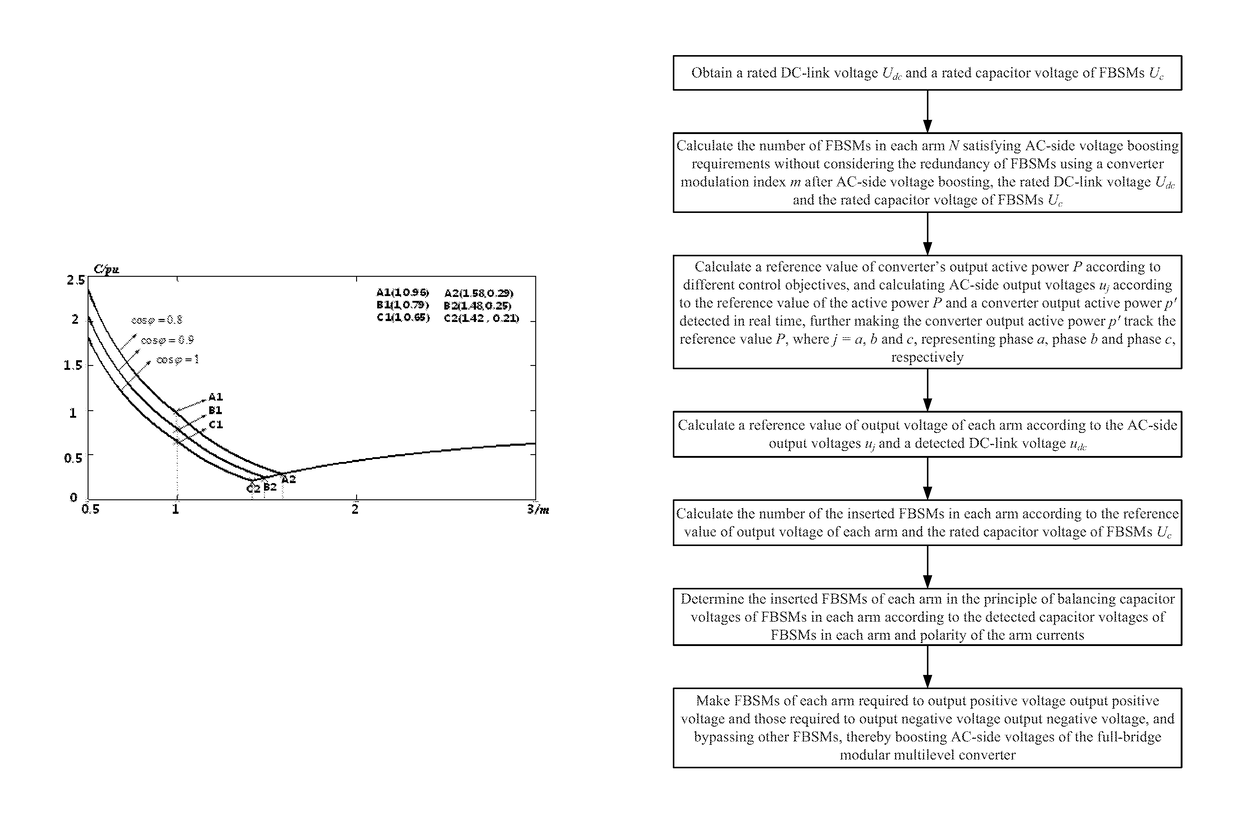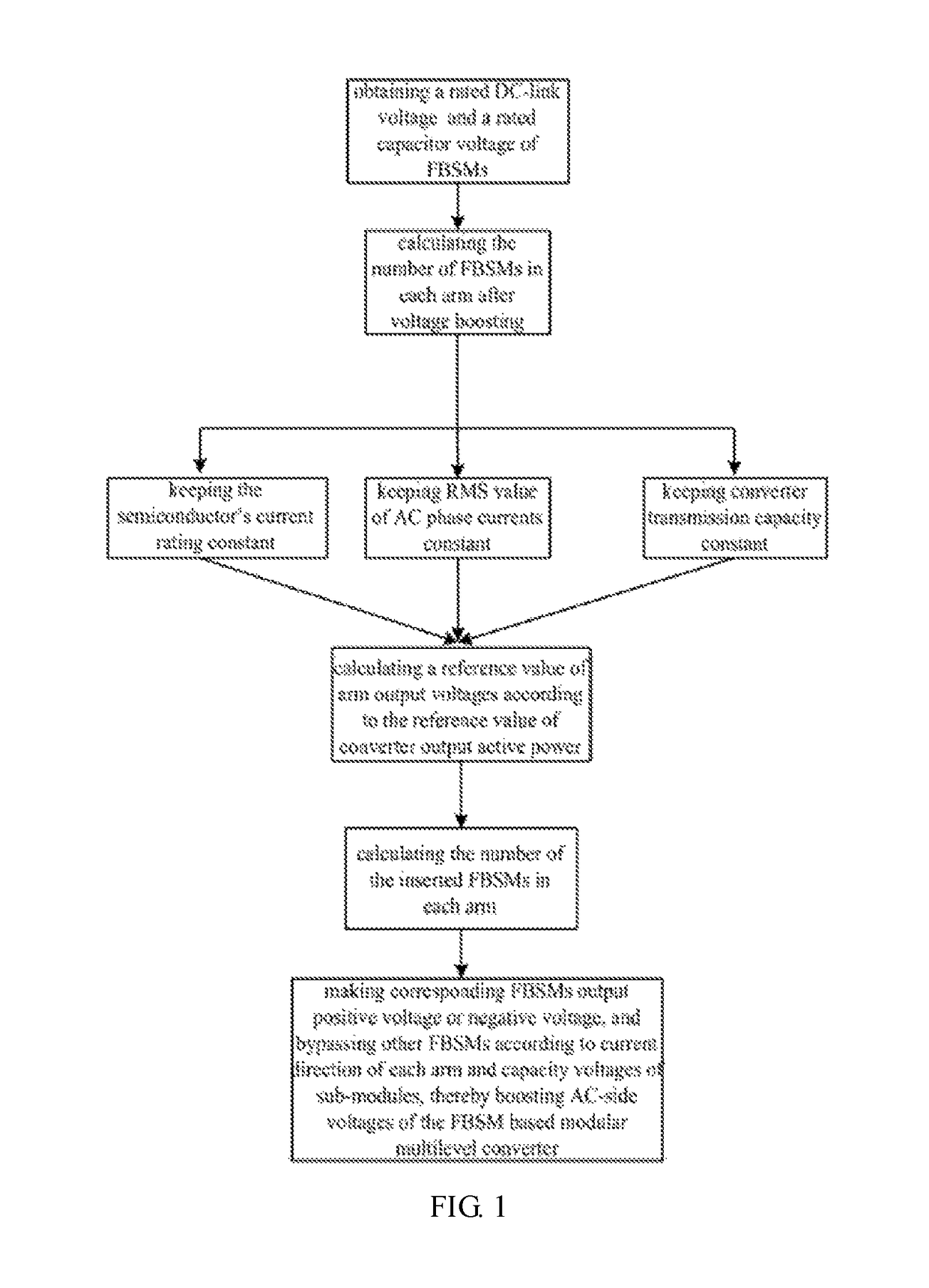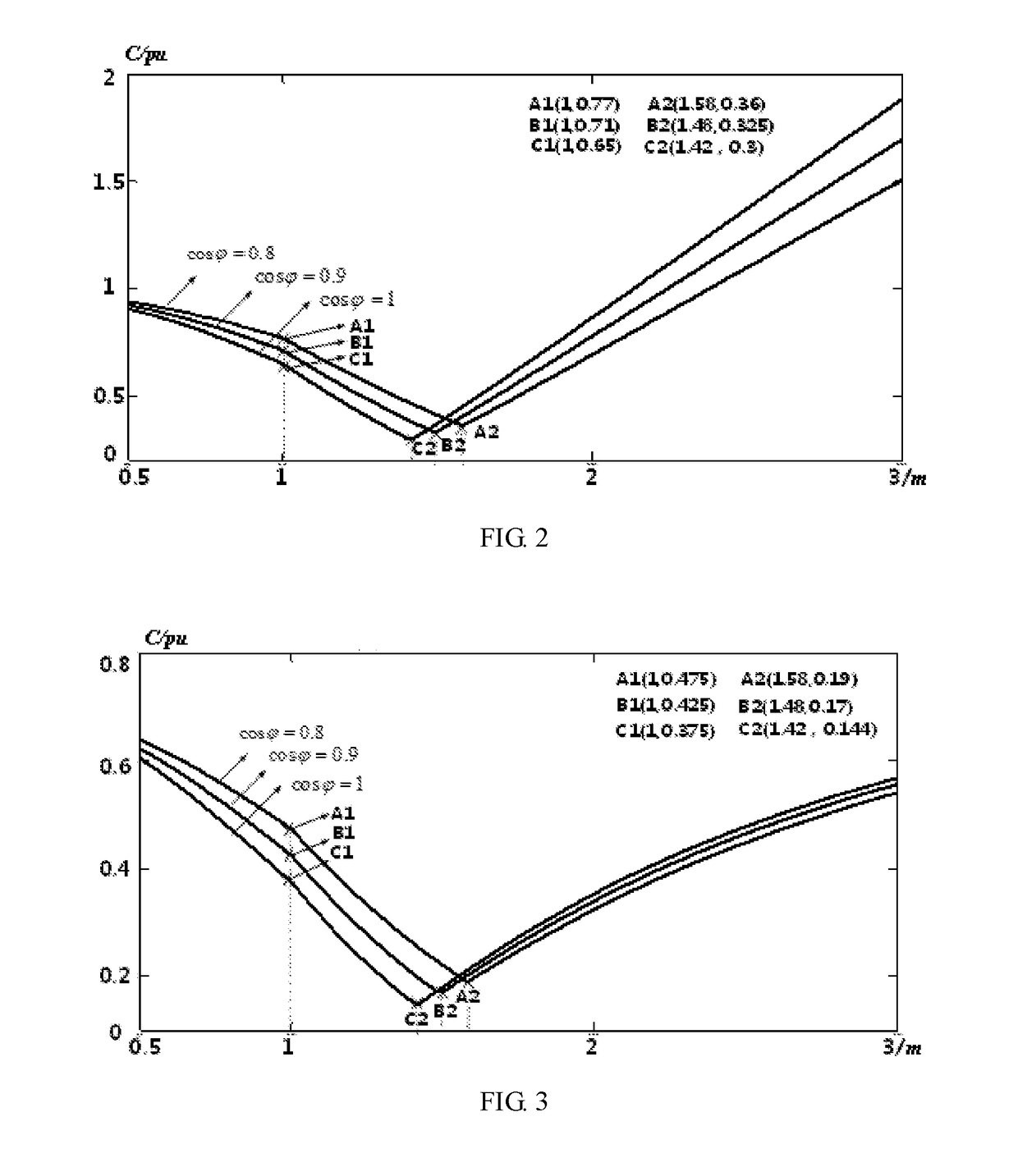Operating method of full-bridge modular multilevel converter boosting AC voltages for high voltage direct current transmission
a multi-level converter and ac voltage technology, applied in the field of multi-level power electronic converters, can solve the problems of reducing the transmission capacity of the converter, so as to reduce the cost of the converter and reduce the energy interaction
- Summary
- Abstract
- Description
- Claims
- Application Information
AI Technical Summary
Benefits of technology
Problems solved by technology
Method used
Image
Examples
embodiment 1
[0041]This embodiment is to illustrate advantages in improving transmission capacity of the converter and reducing converter cost while keeping RMS value of AC currents constant after AC-side voltage boosting. Quantitative analysis is give below for better understanding.
[0042]Firstly, the advantage of improving transmission capacity of a converter by boosting AC-side voltages is analyzed.
[0043]Transmission capacity of the converter S after AC-side voltage boosting can be expressed as
[0044]S=32UjmIjm,
where Ujm and Ijm are peak values of AC-side voltages and AC-side currents after AC-side voltage boosting respectively. Obviously, the transmission capacity of the converter will increase along with the increase of Ujm under a constant Ijm.
[0045]Next, advantage of reducing converter cost by boosting AC-side voltages is analyzed. Assuming the converter operates as a rectifier, take phase a for example, the instantaneous power flowing in the upper and lower arm can be expressed as:
[0046]...
embodiment 2
[0059]This embodiment is to illustrate advantages in reducing converter cost while keeping the semiconductor's current rating constant after AC-side voltage boosting. For better understanding, quantitative analysis is given in the following.
[0060]Assuming harmonic circulating currents are suppressed effectively, the RMS value of the arm current Ir can be expressed as:
Ir=√{square root over ((Idc / 3)2+(Im / 2√{square root over (5)})2)}
where Idc is the rated DC current and Im is peak value of AC-side currents.
[0061]Ignoring power loss of the converter, the relationship between Idc and Im can be expressed as:
[0062]Idc=34mImcosφ,
where m is converter modulation index and ω is power factor angle.
[0063]Furthermore, the relationship between Im and Ir can be derived as:
[0064]Im=4Irm2cos2φ+2.
[0065]Similar to the analysis in embodiment 1, the relationship between the required capacitance value of FBSMs C and converter modulation index m under the constant semiconductor's current rating...
embodiment 3
[0069]This embodiment is to illustrate advantages in reducing converter cost further and improving operating efficiency of the converter while keeping transmission capacity of the converter constant after AC-side voltage boosting. For better understanding, quantitative analysis is given in the following.
[0070]Firstly, advantage of reducing converter cost is analyzed.
[0071]Similar to the analysis in embodiment 1 and embodiment 2, the relationship between the required capacitance value of FBSMs C and converter modulation index m under the constant transmission capacity can be derived as:
[0072]C={Idc3ɛUcω1mcosφ[1-(mcosφ2)2]1.5,m≤12Idc3ɛUcω1m(1+m)cosφmax{[1-(mcosφ2)2]1.5,m2cosφ2(1-1m2)1.5},m>1,mcosφ / 21Idc3ɛUcω1(1+m)m(1-1m2)1.5,mcosφ / 2≥1.
[0073]FIG. 4 illustrates the relationships between the required capacitance value of FBSMs C and converter modulation index m with different power factors under the constant capacitor voltage ripple. Cle...
PUM
 Login to View More
Login to View More Abstract
Description
Claims
Application Information
 Login to View More
Login to View More - R&D
- Intellectual Property
- Life Sciences
- Materials
- Tech Scout
- Unparalleled Data Quality
- Higher Quality Content
- 60% Fewer Hallucinations
Browse by: Latest US Patents, China's latest patents, Technical Efficacy Thesaurus, Application Domain, Technology Topic, Popular Technical Reports.
© 2025 PatSnap. All rights reserved.Legal|Privacy policy|Modern Slavery Act Transparency Statement|Sitemap|About US| Contact US: help@patsnap.com



